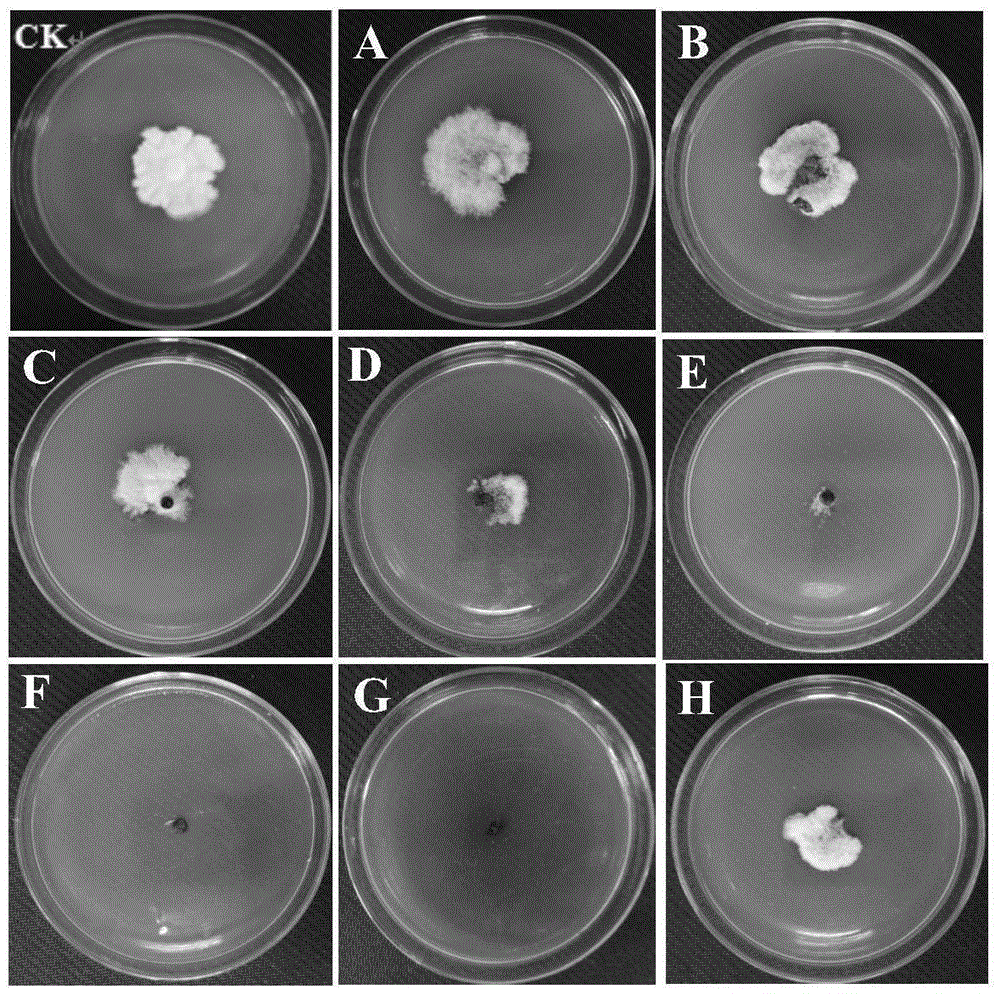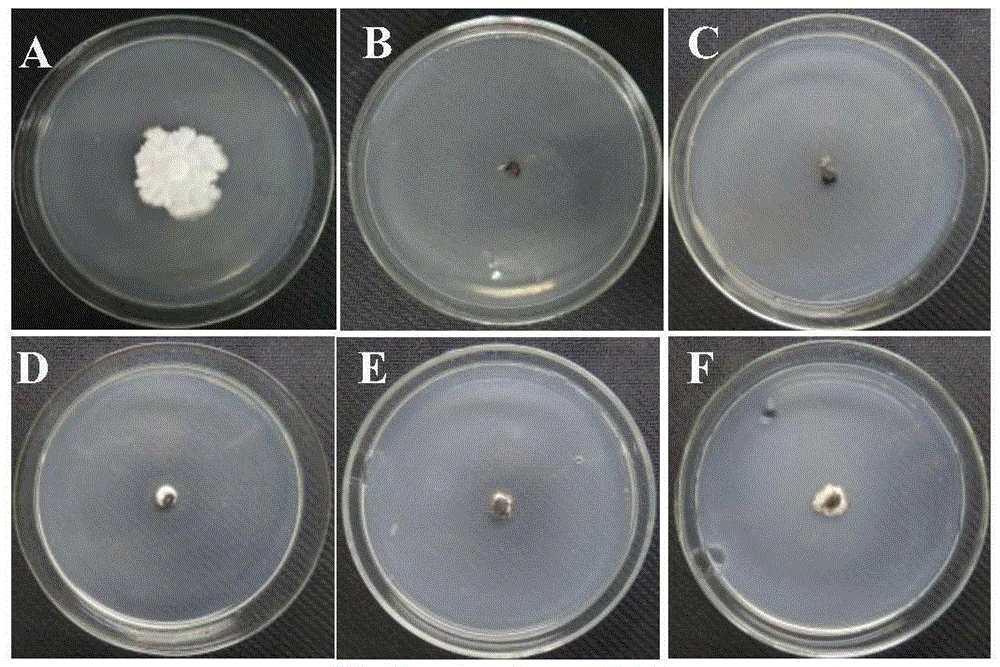Mulberry antergic endophyte Bacillus tequilensis
An endophyte Bacillus tequila, antagonistic technology, applied in the direction of bacteria, microorganisms, fungicides, etc., can solve the problems of pesticide residues, environmental pollution, and difficult to guarantee the safety of mulberry food, etc., to achieve strong thermal stability, strong antagonistic effect
- Summary
- Abstract
- Description
- Claims
- Application Information
AI Technical Summary
Problems solved by technology
Method used
Image
Examples
Embodiment 1
[0025] Example 1: Isolation, purification and screening of endophytic antagonistic bacteria in mulberry trees
[0026] 1. Isolation and purification of mulberry endophytes
[0027] 1.1. Isolation of endophytes:
[0028] Collection and storage of samples: Mulberry stems were collected from mulberry fields, washed with tap water, dried, numbered and stored at 4°C, and endophytic bacteria were isolated in time.
[0029] Isolation of endophytes: cut the stems of mulberry trees into small pieces (about 5.0cm in length), soak them in 75.0% alcohol completely, take them out, ignite the alcohol on the surface of the stems on an alcohol lamp, and wait for the alcohol to burn out. Roll the mulberry branches sterilized on this surface on the blank medium, so that each surface of the mulberry branches is in contact with the medium, and use it as a blank control to verify whether the surface disinfection is thorough. Then it was placed in a sterile petri dish and cut open in three la...
Embodiment 2
[0037] Embodiment 2: The biological characteristic of 7PJ-16 bacterial strain
[0038] 1. The effect of temperature on the growth of antagonistic bacteria 7PJ-16
[0039] Inoculate the antagonistic bacteria 7PJ-16 strain into PDB liquid medium (1% inoculum volume, 25% bottle volume), shake at 180r / min at 5°C, 15°C, 25°C, 35°C, 45°C and 55°C respectively Cultivate, take the bacterial solution regularly to measure its OD 600 The value (PDB medium was adjusted to zero), the same treatment was repeated 3 times to get the average value. Taking culture time as abscissa, OD 600 Make a growth curve for the ordinate, and calculate the generation time of the endophytic antagonistic bacteria 7PJ-16 strain at different temperatures.
[0040] Effect of Fermentation Time on Antibacterial Active Substances Produced by Antagonistic Bacteria 7PJ-16 Strain
[0041] The antagonistic bacterium 7PJ-16 strain was inoculated in PDB medium (1% inoculum volume, 30% bottle volume), and cultur...
Embodiment 3
[0042] Embodiment 3: thermal stability and growth promoting effect of 7PJ-16 fermented liquid
[0043] 1. Detection of thermal stability of active fermentation liquid of antagonistic bacteria 7PJ-16 strain
[0044] The aseptic fermentation filtrate of the antagonistic bacterium 7PJ-16 was placed at 40°C, 60°C, 80°C, and 100°C for 30 minutes, and after cooling to room temperature, the mycelium growth rate method was used to detect its effect on the strain of G. nucleatum SXSG-5. Bacteriostatic activity. Sterilized water was used as the blank control, and aseptic fermentation filtrate without heat treatment was used as the positive control. Each group was repeated 3 times to determine its effect on the growth of pathogenic bacteria.
[0045] Growth-promoting effect of antagonistic bacteria 7PJ-16 on tissue cultured seedlings of mulberry
[0046] The tissue-cultured seedlings with the same growth were taken, and the 7PJ-16 strain bacteria and sterile fermentation liquid w...
PUM
 Login to View More
Login to View More Abstract
Description
Claims
Application Information
 Login to View More
Login to View More - R&D
- Intellectual Property
- Life Sciences
- Materials
- Tech Scout
- Unparalleled Data Quality
- Higher Quality Content
- 60% Fewer Hallucinations
Browse by: Latest US Patents, China's latest patents, Technical Efficacy Thesaurus, Application Domain, Technology Topic, Popular Technical Reports.
© 2025 PatSnap. All rights reserved.Legal|Privacy policy|Modern Slavery Act Transparency Statement|Sitemap|About US| Contact US: help@patsnap.com



